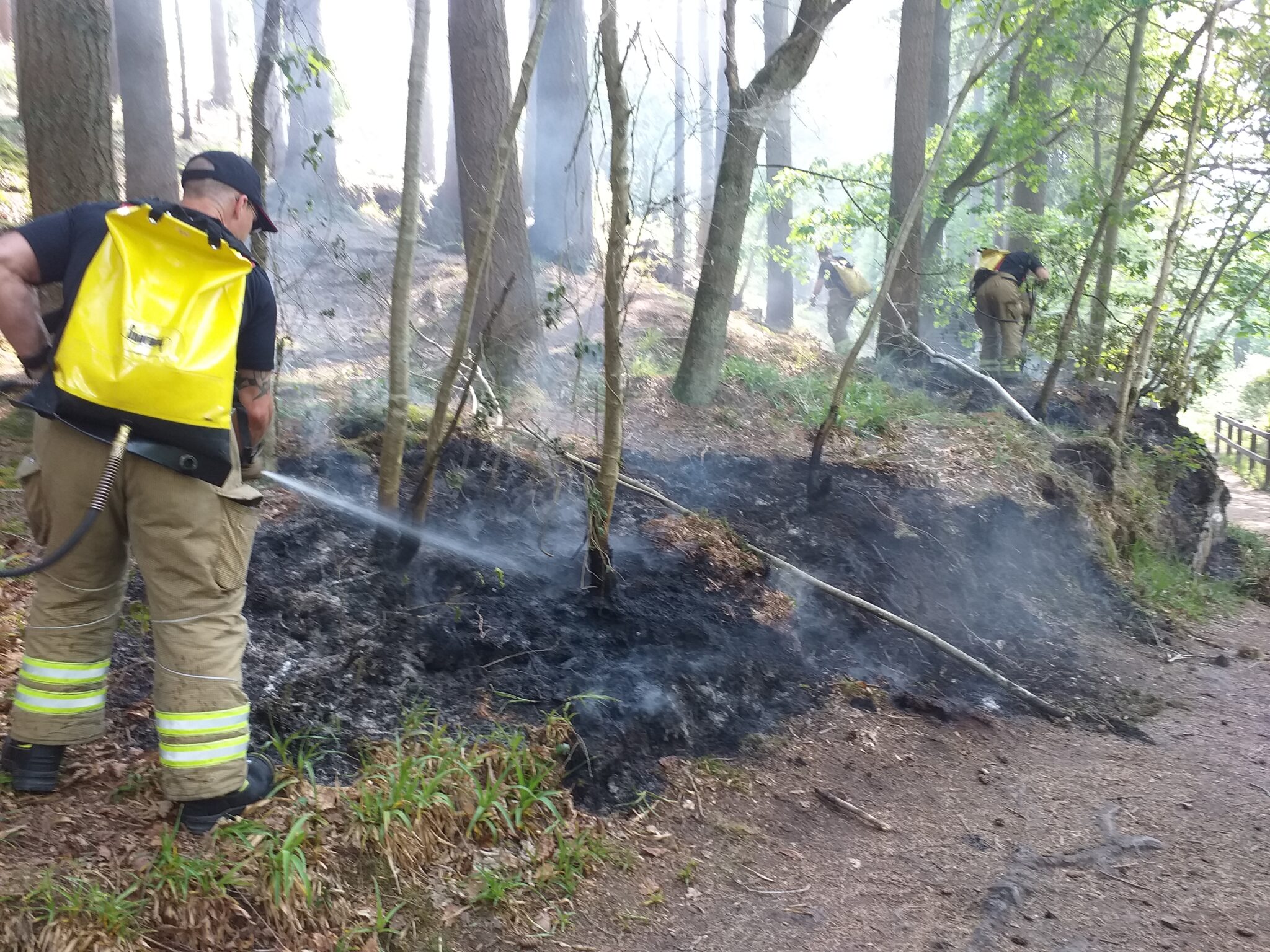Wildfires Threaten UK's Rarest Wildlife With Extinction

Table of Contents
The Devastating Impact of Wildfires on UK Habitats
Wildfires wreak havoc on UK habitats, causing widespread habitat destruction and ecosystem disruption. Areas like peatlands, heathlands, and ancient woodlands, which are biodiversity hotspots, are particularly vulnerable. These fires not only destroy crucial food sources and shelter but also disrupt vital ecological processes, leaving behind barren landscapes ill-suited for the delicate balance of life they once supported. The intensity and speed of these fires leave little chance for many species to escape.
- Loss of nesting sites for birds: Many bird species rely on specific vegetation for nesting, which is destroyed in wildfires, leading to breeding failures.
- Destruction of insect populations: Wildfires decimate insect populations, impacting the food chain and affecting species that depend on them for survival. This includes pollinators crucial for plant reproduction.
- Damage to plant communities: Wildfires can eliminate rare plant species and disrupt the delicate balance of plant communities, affecting the overall ecosystem health. Recovery can take decades, if it occurs at all.
- Disruption of crucial ecological processes: Wildfires alter water cycles, soil composition, and nutrient flow, impacting the long-term health and stability of the ecosystem. This includes damaging vital carbon sinks like peatlands.
- Specific examples: Areas like the New Forest National Park and Dartmoor National Park have experienced significant wildfire damage, impacting rare butterfly populations and heathland birds.
Specific Endangered Species at Risk
Several endangered species in the UK are acutely vulnerable to the devastating effects of wildfires. Their specialized habitats, often already under threat, offer little refuge from the intense heat and flames. The loss of these species would represent an irreversible blow to UK biodiversity.
- The Dartford Warbler: This small, colourful bird relies on heathland habitats, easily destroyed by fire. Wildfires decimate their nesting sites and food sources, drastically reducing their already fragile populations.
- The Smooth Snake: This rare reptile relies on specific microhabitats within heathland and woodland edges, easily destroyed by wildfire. The loss of these habitats leads to significant population declines.
- The Sand Lizard: This elusive reptile is highly susceptible to the effects of wildfire, losing basking sites and shelter. Their fragmented populations are highly vulnerable to complete local extinction.
[Include images of the Dartford Warbler, Smooth Snake, and Sand Lizard here]
The Role of Climate Change in Increasing Wildfire Risk
The increasing frequency and intensity of wildfires in the UK are intrinsically linked to climate change. Hotter, drier summers, exacerbated by global warming, create ideal conditions for wildfires to ignite and spread rapidly. Prolonged periods of drought desiccate vegetation, turning it into highly flammable fuel.
- Rising temperatures and decreased rainfall: These factors combine to create extremely dry conditions, making vegetation highly susceptible to ignition.
- Increased risk of ignition from human activity: Human activities, such as carelessly discarded cigarettes or campfires, significantly increase the likelihood of wildfire ignition during dry periods.
- The impact of prolonged dry spells on vegetation flammability: Extended periods without significant rainfall drastically increase the flammability of vegetation, leading to more intense and widespread fires.
Conservation Efforts and Mitigation Strategies
Recognising the urgent threat, conservation organisations and government agencies are implementing various strategies to mitigate wildfire risks and protect vulnerable species and habitats. These efforts involve prevention, suppression, and post-fire restoration.
- Controlled burns: Prescribed burns, conducted under controlled conditions, can reduce fuel loads and prevent larger, more destructive wildfires.
- Improved early warning systems: Investing in advanced monitoring technologies can aid early detection of wildfires, allowing for faster response times and more effective suppression efforts.
- Public awareness campaigns: Educating the public about wildfire prevention and responsible behaviour in the countryside is crucial in reducing the risk of human-caused fires.
- Habitat restoration projects: Post-fire restoration projects focus on rehabilitating damaged habitats, including replanting native vegetation and creating suitable conditions for the return of wildlife.
- Funding for conservation efforts: Increased funding for research, monitoring, and conservation initiatives is vital to protect vulnerable species and habitats.
Conclusion
The threat posed by wildfires to the UK's rarest wildlife is undeniably urgent and demands immediate and sustained action. The devastating impact of these fires on habitats, coupled with the increasing frequency and intensity due to climate change, necessitates a comprehensive and multifaceted approach. We must support conservation organizations working tirelessly to protect these vulnerable species, advocate for policies promoting wildfire prevention and climate change mitigation, and participate in community initiatives to safeguard the UK's irreplaceable biodiversity. Learn more about the impact of UK wildfires and how you can help protect rare wildlife from extinction by visiting [link to a relevant conservation organisation]. Let's act now to protect the unique and precious wildlife of the UK from the devastating effects of wildfires.

Featured Posts
-
 Inter Napoli And Atalanta De Race Naar De Scudetto Laatste Wedstrijden
May 13, 2025
Inter Napoli And Atalanta De Race Naar De Scudetto Laatste Wedstrijden
May 13, 2025 -
 Landman Season 2 Returning Cast Members Revealed
May 13, 2025
Landman Season 2 Returning Cast Members Revealed
May 13, 2025 -
 Nba Draft Lottery Sixers Odds Viewing Guide And Key Information
May 13, 2025
Nba Draft Lottery Sixers Odds Viewing Guide And Key Information
May 13, 2025 -
 The Unending Nightmare Gaza Hostages And Their Families Plight
May 13, 2025
The Unending Nightmare Gaza Hostages And Their Families Plight
May 13, 2025 -
 Springwatch In Japan Cherry Blossom Season
May 13, 2025
Springwatch In Japan Cherry Blossom Season
May 13, 2025
